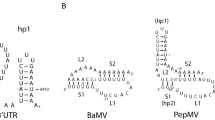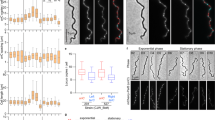Abstract
Using the established quail cell line Q/d3 conditionally transformed by the v-jun oncogene, cDNA clones (TOJ2, TOJ3, TOJ5, TOJ6) were isolated by representational difference analysis (RDA) that correspond to genes which were induced immediately upon conditional activation of v-jun. One of these genes, TOJ3, is immediately and specifically activated after doxycycline-mediated v-jun induction, with kinetics similar to the induction of well characterized direct AP-1 target genes. TOJ3 is neither activated upon conditional activation of v-myc, nor in cells or cell lines non-conditionally transformed by oncogenes other than v-jun. Sequence analysis revealed that the TOJ3-specific cDNA encodes a 530-amino acid protein with significant sequence similarities to the murine or human microspherule protein 1 (MCRS1, MSP58), a nucleolar protein that directly interacts with the ICP22 regulatory protein from herpes simplex virus 1 or with p120, a proliferation-related protein expressed at high levels in most human malignant tumor cells. Similar to its mammalian counterparts, the TOJ3 protein contains a bipartite nuclear localization motif and a forkhead associated domain (FHA). Using polyclonal antibodies directed against a recombinant amino-terminal TOJ3 protein segment, the activation of TOJ3 in jun-transformed fibroblasts was also demonstrated at the protein level by specific detection of a polypeptide with an apparent Mr of 65 000. Retroviral expression of the TOJ3 gene in quail or chicken embryo fibroblasts induces anchorage-independent growth, indicating that the immediate activation of TOJ3 in fibroblasts transformed by the v-jun oncogene contributes to cell transformation.
This is a preview of subscription content, access via your institution
Access options
Subscribe to this journal
Receive 50 print issues and online access
$259.00 per year
only $5.18 per issue
Buy this article
- Purchase on Springer Link
- Instant access to full article PDF
Prices may be subject to local taxes which are calculated during checkout







Similar content being viewed by others
References
Altschul SF, Madden TL, Schaffer AA, Zhang J, Zhang Z, Miller W, Lipman DJ . 1997 Nucleic Acids Res. 25: 3389–3402
Angel P, Szabowski A, Schorpp-Kistner . 2001 Oncogene 20: 2413–2423
Apel I, Yu CL, Wang T, Dobry C, Van Antwerp ME, Jove R, Prochownik EV . 1992 Mol. Cell. Biol. 12: 3356–3364
Bader AG, Hartl M, Bister K . 2000 Virology 270: 98–110
Bengal E, Ransone L, Scharfmann R, Dwarki VJ, Tapscott SJ, Weintraub H, Verma IM . 1992 Cell 68: 507–519
Bister K, Hayman MJ, Vogt PK . 1977 Virology 82: 431–448
Bister K, Trachmann C, Jansen HW, Schroeer B, Patschinsky T . 1987 Oncogene 1: 97–109
Bos TJ, Monteclaro FS, Mitsunobu F, Ball AR Jr, Chang CHW, Nishimura T, Vogt PK . 1990 Genes Dev. 4: 1677–1687
Boyd KE, Farnham PJ . 1999 Proc. Soc. Exp. Biol. Med. 222: 9–28
Bruni R, Roizman B . 1998 J. Virol. 72: 8525–8531
Cohen SB, Waha A, Gelman IH, Vogt PK . 2001 Oncogene 20: 141–146
Coller HA, Grandori C, Tamayo P, Colbert T, Lander ES, Eisenman RN, Golub TR . 2000 Proc. Natl. Acad. Sci. USA 97: 3260–3265
Cordero-Erausquin M, Marubio LM, Klinik R, Changeux JP . 2000 Trends Pharmacol. Sci. 21: 211–217
Curran T, Vogt PK . 1991 Transcriptional Regulation. McKnight SL and Yamamoto K (eds) Cold Spring Harbor Laboratory Press: Cold Spring Harbor pp. 797–831
Dang CV . 1999 Mol. Cell. Biol. 19: 1–11
Dingwall C, Laskey RA . 1991 Trends Biochem. Sci. 16: 478–481
Dingwall C, Laskey RA . 1998 Curr Biol. 8: R922–R924
Durocher D, Henckel J, Fersht AR, Jackson SP . 1999 Mol. Cell 4: 387–394
Edwards JB, Delort J, Mallet J . 1991 Nucleic Acids Res. 19: 5227–5232
Freeman JW, Busch RK, Gyorkey F, Gyorkey P, Ross BE, Busch H . 1988 Cancer Res. 48: 1244–1251
Fu S, Bottoli I, Goller M, Vogt PK . 1999 Proc. Natl. Acad. Sci. USA 96: 5716–5721
Fu SI, Waha A, Vogt PK . 2000 Oncogene 19: 3537–3545
Goller ME, Iacovoni JS, Vogt PK, Kruse U . 1998 Oncogene 16: 2945–2948
Grossi M, Calconi A, Tato F . 1991 Oncogene 6: 1767–1773
Hadman M, Gabos L, Loo M, Sehgal A, Bos TJ . 1996 Oncogene 12: 135–142
Hadman M, Lin W, Bush L, Bos TJ . 1998 Oncogene 16: 655–660
Hartl M, Bister K . 1995 Proc. Natl. Acad. Sci. USA 92: 11731–11735
Hartl M, Bister K . 1998 Oncogene 17: 2901–2913
Hartl M, Vogt PK, Bister K . 1995 Virology 207: 321–326
Hofmann, K, Bucher, P . 1995 Trends Biochem. Sci. 20: 347–349
Hozak P . 1995 Exp. Cell Res. 216: 285–289
Hubank M, Schatz DG . 1994 Nucleic Acids Res. 22: 5640–5648
Hughes SH, Greenhouse JJ, Petropolous CJ, Sutrave P . 1987 J. Virol. 61: 3004–3012
Jansen HW, Patschinsky T, Bister K . 1983 J. Virol. 48: 61–73
Jochum W, Passegué E, Wagner EF . 2001 Oncogene 20: 2401–2412
Johnson R, Spiegelman B, Hanahan D, Wisdom R . 1996 Mol. Cell. Biol. 16: 4504–4511
Jurdic P, Treilleux I, Vandel L, Tabone E, Huguier S, Sergeant A, Castellazzi M . 1995 Oncogene 11: 1699–1709
Karin M, Liu ZG, Zandi E . 1997 Curr. Opin. Cell Biol. 9: 240–246
Kruse U, Iacovoni JS, Goller ME, Vogt PK . 1997 Proc. Natl. Acad. Sci. USA 94: 12396–12400
Lamph WW, Wamsley P, Sassone-Corsi P, Verma IM . 1988 Nature 334: 629–631
Li J, Lee GI, Van Doren SR, Walker JC . 2000 J. Cell Sci. 113: 4143–4149
Maki Y, Bos TJ, Davis C, Starbuck M, Vogt PK . 1987 Proc. Natl. Acad. Sci. USA 84: 2848–2852
Mann B, Gelos M, Siedow A, Hanski ML, Gratchev A, Ilyas M, Bodmer WF, Moyer MP, Riecken EO, Buhr HJ, Hanski C . 1999 Proc. Natl. Acad. Sci. USA 96: 1603–1608
Mettouchi A, Cabon F, Montreau N, Vernier P, Mercier G, Blangy D, Tricoire H, Vigier P, Binétruy B . 1994 EMBO J. 13: 5668–5678
Mölders H, Jenuwein T, Adamkiewicz J, Müller R . 1987 Oncogene 1: 377–385
Moscovici C, Moscovici MG, Jimenez H, Lai MMC, Hayman MJ, Vogt PK . 1977 Cell 11: 95–103
Nishimura T, Vogt PK . 1988 Oncogene 3: 659–663
Nishizawa M, Goto N, Kawai S . 1987 J. Virol. 61: 3733–3740
Oberst C, Hartl M, Weiskirchen R, Bister K . 1999 Virology 253: 193–207
Ozanne BW, McGarry L, Spence HJ, Johnston I, Winnie J, Meagher L, Stapleton G . 2000 Eur. J. Cancer 36: 1640–1648
Ren Y, Busch RK, Perlaky L, Busch H . 1998 Eur. J. Biochem. 253: 734–742
Rinehart-Kim J, Johnston M, Birrer M, Bos T . 2000 Int. J. Cancer 88: 180–190
Saez E, Rutberg SE, Mueller E, Oppenheim H, Smoluk J, Yuspa SH, Spiegelman BM . 1995 Cell 82: 721–732
Schoepfer R, Conroy WG, Whiting P, Gore M,, Lindstrom J . 1990 Neuron 1: 35–48
Shaulian E, Karin M . 2001 Oncogene 20: 2390–2400
Su HY, Bos TJ, Monteclaro FS, Vogt PK . 1991 Oncogene 6: 1759–1766
Suzuki T, Murakami M, Onai N, Fukuda E, Hashimoto Y, Sonobe MH, Kameda T, Ichinose M, Miki K, Iba H . 1994 J. Virol. 68: 3527–3535
Tikhonenko AT, Linial ML . 1992 J. Virol. 66: 946–955
Van Dam H, Castellazzi M . 2001 Oncogene 20: 2453–2464
Vaughan KT, Weber FE, Einheber S, Fischman DA . 1993 J. Biol. Chem. 268: 3670–3676
Vial E, Castellazzi M . 2000 Oncogene 19: 1772–1782
Vogt PK . 2001 Oncogene 20: 2365–2377
Vogt PK, Aoki M, Bottoli I, Chang HW, Fu S, Hecht A, Iacovoni JS, Jiang BH, Kruse U . 1999 Cell Growth Differ. 10: 777–784
Vogt PK, Bos TJ . 1990 Adv. Cancer Res. 55: 1–35
Wang P, Byeon IJ, Liao H, Beebe KD, Yongkiettrakul S, Pei D, Tsai MD . 2000 J. Mol. Biol. 302: 927–940
Weiskirchen R, Siemeister G, Hartl M, Bister K . 1993 Gene 128: 269–272
Wisdom R . 1999 Exp. Cell Res. 253: 180–185
Wong WY, Håvarstein LS, Morgan IM, Vogt PK . 1992 Oncogene 7: 2077–2080
Young MR, Li JJ, Rincón M, Flavell RA, Sathyanarayana BK, Hunziker R, Colburn N . 1999 Proc. Natl. Acad. Sci. USA 96: 9827–9832
Acknowledgements
We are grateful to Bernard Roizman (The University of Chicago, USA) for the p78 specific antiserum and to Friedrich Lottspeich (Max-Planck-Institute of Biochemistry, Martinsried, Germany) for mass spectrometry. K Bister thanks Peter K Vogt for support during a sabbatical stay at the Scripps Research Institute, La Jolla, CA, USA. We thank Doris Bratschun and Martina Texler for excellent technical assistance. This work was supported by grants SFB-F002/211 from the Austrian Science Foundation (FWF) and 7357 from the Austrian National Bank.
Accession numbers
The sequences reported in this paper have been deposited in the GenBank database, www.ncbi.nlm.nih.gov (accession nos. AY007310, AF390033, AF390034, AF390035).
Author information
Authors and Affiliations
Corresponding author
Rights and permissions
About this article
Cite this article
Bader, A., Schneider, M., Bister, K. et al. TOJ3, a target of the v-Jun transcription factor, encodes a protein with transforming activity related to human microspherule protein 1 (MCRS1). Oncogene 20, 7524–7535 (2001). https://doi.org/10.1038/sj.onc.1204938
Received:
Revised:
Accepted:
Published:
Issue Date:
DOI: https://doi.org/10.1038/sj.onc.1204938
Keywords
This article is cited by
-
MCRS1 associates with cytoplasmic dynein and mediates pericentrosomal material recruitment
Scientific Reports (2016)
-
The candidate oncogene (MCRS1) promotes the growth of human lung cancer cells via the miR–155–Rb1 pathway
Journal of Experimental & Clinical Cancer Research (2015)
-
Identification and characterization of nuclear and nucleolar localization signals in 58-kDa microspherule protein (MSP58)
Journal of Biomedical Science (2015)
-
MCRS1 overexpression, which is specifically inhibited by miR-129*, promotes the epithelial-mesenchymal transition and metastasis in non-small cell lung cancer
Molecular Cancer (2014)
-
Transcriptional control of DNA replication licensing by Myc
Scientific Reports (2013)



